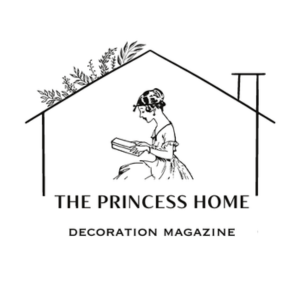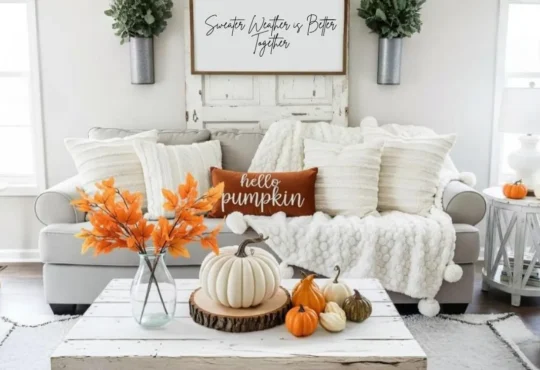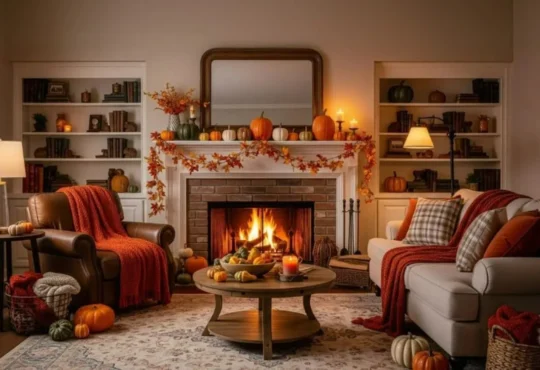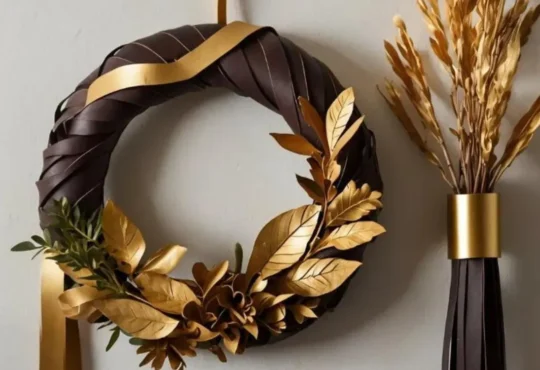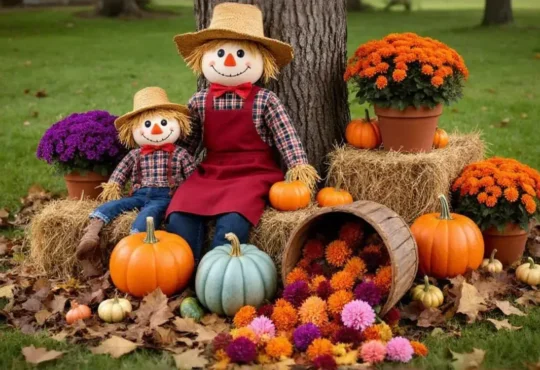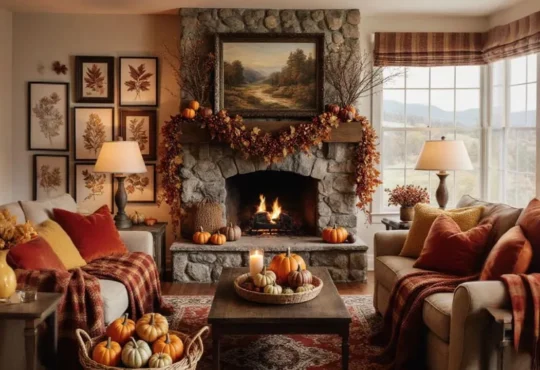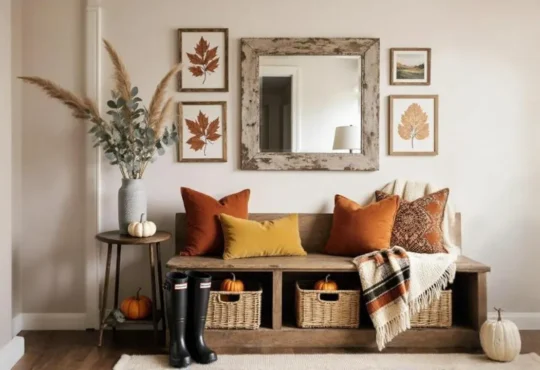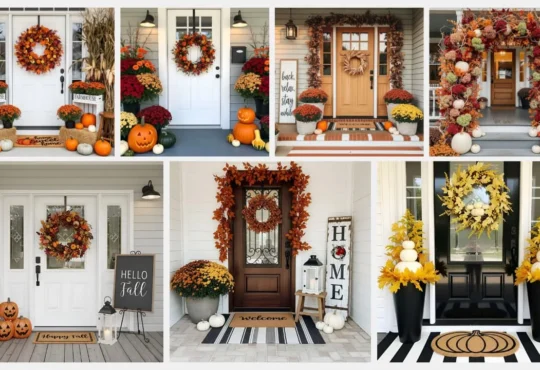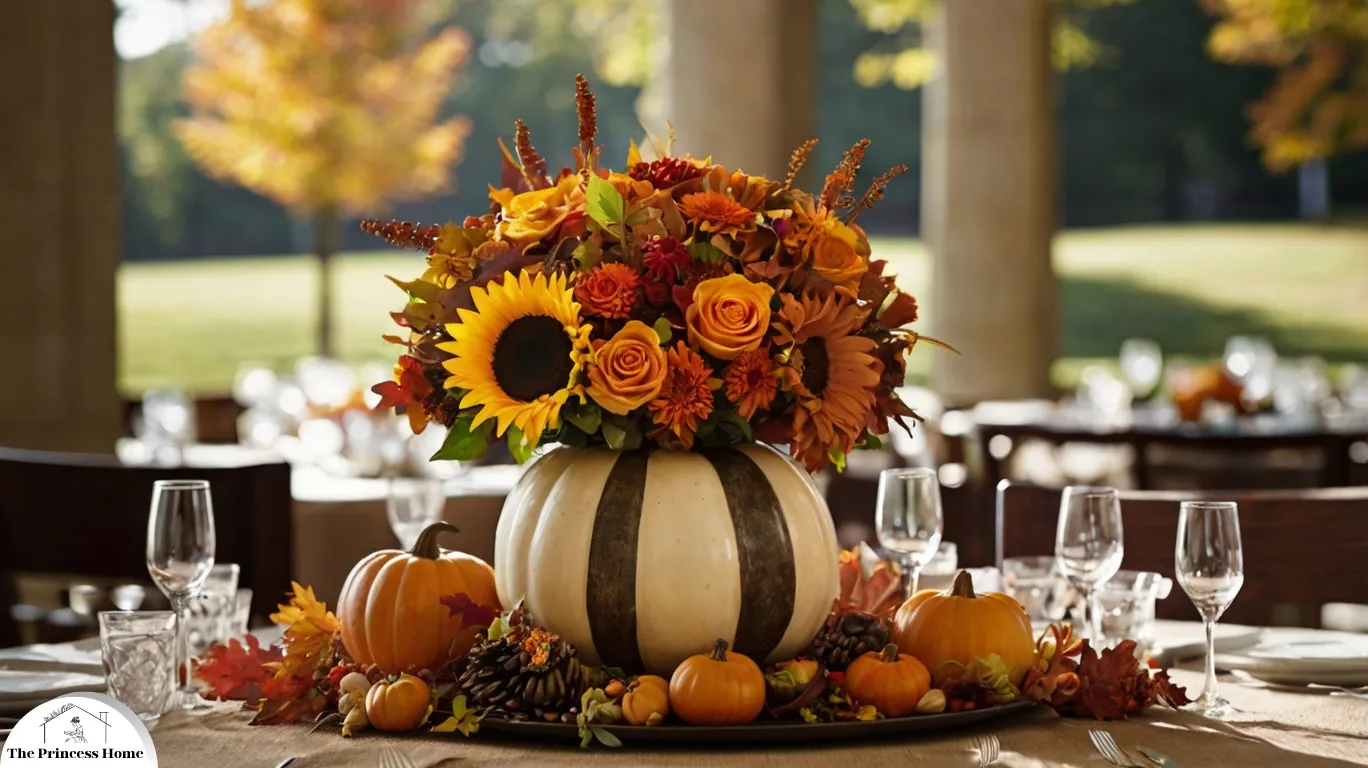
As the leaves change color and the air turns crisp, it’s time to welcome the beauty of fall into your home. One of the most delightful ways to celebrate this season is by creating stunning fall centerpieces that capture the essence of autumn. Whether you’re planning a cozy family dinner, a festive gathering with friends, or simply want to enhance your home’s decor, fall centerpieces are the perfect way to infuse warmth, style, and charm into your living spaces.
In this comprehensive guide, we’ll explore the art of crafting fall centerpieces that not only showcase the rich and vibrant colors of autumn but also reflect your personal style. From selecting the right elements to arranging them creatively, we’ll provide you with tips, ideas, and step-by-step instructions to help you create breathtaking fall centerpieces that will leave a lasting impression.
Let’s dive deeper into some specific fall centerpiece ideas and additional tips to help you create your own masterpiece.
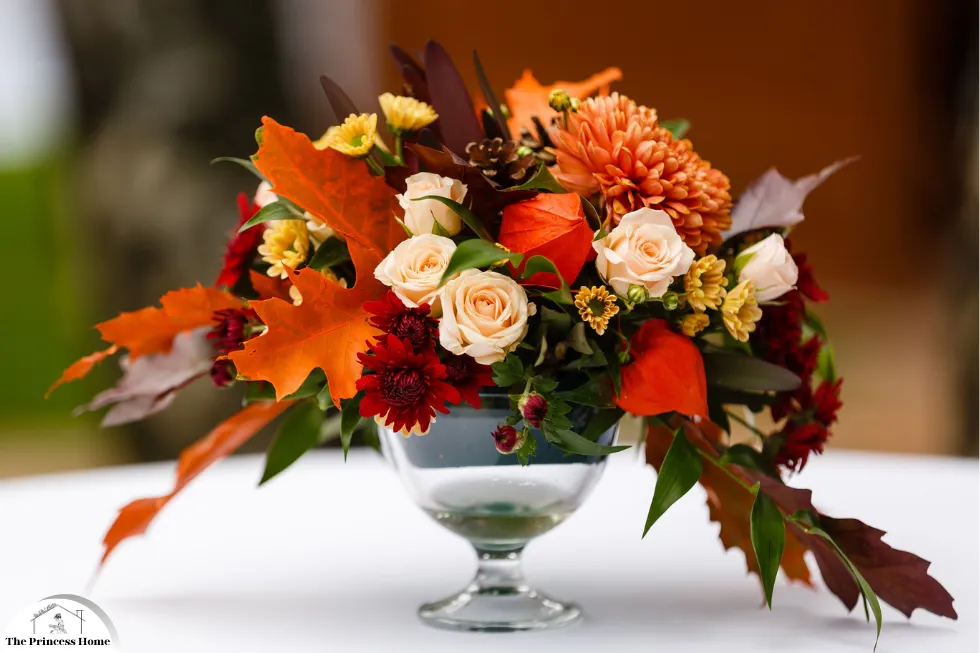
1*Choosing the Perfect Elements
1.Seasonal Flowers and Foliage:
When it comes to fall centerpieces, the selection of flowers and foliage is crucial. Opt for seasonal blooms like chrysanthemums, sunflowers, and dahlias, which are available in various warm shades such as orange, red, and yellow. Incorporate foliage like maple leaves, oak leaves, and eucalyptus branches to add texture and depth to your arrangement. For creating a stunning fall centerpiece, choosing the right combination of seasonal flowers and foliage is key to capturing the essence of autumn.
Here’s how to elevate your centerpiece with autumnal elegance:
1.Seasonal Flowers:
Chrysanthemums: These quintessential fall flowers are available in a variety of warm hues, such as deep oranges, rich reds, and golden yellows. Their full, bushy blooms add volume and vibrancy to any arrangement.
Sunflowers: With their bold yellow petals and dark centers, sunflowers bring a cheerful touch to your centerpiece. Pair them with other fall flowers to create a striking contrast.
Dahlias: Known for their intricate petal structures, dahlias come in an array of colors perfect for fall, including burgundy, rust, and pumpkin orange. Their dramatic appearance adds a sophisticated flair.
2.Foliage:
Maple Leaves: The vibrant reds, oranges, and yellows of maple leaves embody the spirit of fall. Their unique shapes and warm tones make them a perfect backdrop for your flowers.
Oak Leaves: Oak leaves, with their deep brown and russet hues, add an earthy, rustic feel. They’re ideal for giving your centerpiece a touch of nature’s beauty.
Eucalyptus Branches: Eucalyptus offers a cool, dusty green contrast to the warm autumn palette. Its long, slender leaves add texture and movement to the arrangement, while its subtle fragrance enhances the overall ambiance.
By thoughtfully selecting these elements, your fall centerpiece will exude warmth and elegance, making it a perfect addition to your seasonal decor.
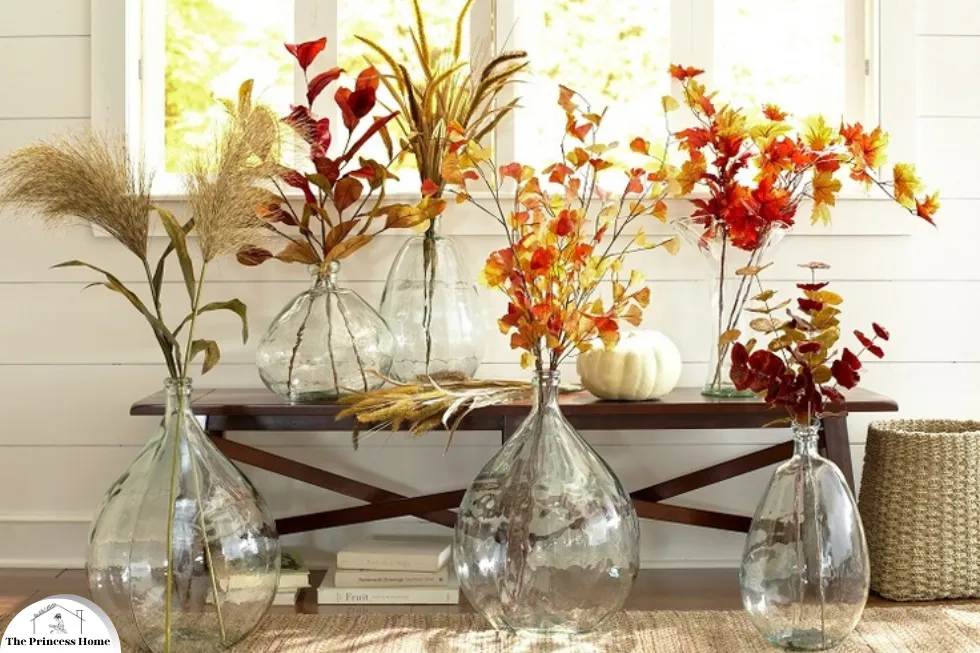
2.Vases and Containers:
The choice of vase or container can significantly impact the overall look of your centerpiece. Consider using rustic elements like wooden crates, mason jars, or vintage pitchers for a charming and cozy feel. Clear glass vases can also work well, allowing the natural beauty of the flowers and foliage to shine through. When selecting vases and containers for your centerpiece, the right choice can elevate the entire arrangement, creating a focal point that enhances the theme of your decor.
Here’s a closer look at how different types of vases and containers contribute to the overall aesthetic:
1. Wooden Crates:
Rustic Charm: Wooden crates are perfect for creating a rustic or farmhouse-inspired centerpiece. Their natural texture and warm tones add an organic feel to the arrangement.
Versatility: You can fill wooden crates with small jars or bottles, each holding a single bloom, or line them with a waterproof liner and place floral foam inside for a more structured arrangement.
Layering: Wooden crates also allow for layering different heights of flowers and foliage, giving your centerpiece a more dynamic and visually appealing look.
2. Mason Jars:
Quaint and Cozy: Mason jars bring a touch of nostalgia and homeliness to your centerpiece. They’re versatile and can be dressed up or down depending on the occasion.
Customization: Consider painting the jars in soft, muted colors or wrapping them in burlap and twine for a more rustic look. You can also fill them with seasonal elements like acorns, pinecones, or small candles alongside your floral arrangement.
Grouping: Using multiple mason jars of varying sizes can create a charming, clustered centerpiece that feels casual yet cohesive.
3. Vintage Pitchers:
Elegance with History: Vintage pitchers, especially those made of porcelain, enamel, or tarnished silver, add a sense of history and elegance to your centerpiece. They’re perfect for a shabby chic or vintage-inspired theme.
Shape and Form: The unique shapes of pitchers, with their narrow necks and wide bodies, provide a natural structure for floral arrangements, helping to create a balanced and flowing look.
Height Variation: Depending on the pitcher’s height, it can add varying levels to your centerpiece, creating a more interesting and layered design.
4. Clear Glass Vases:
Simplicity and Sophistication: Clear glass vases are timeless and versatile, allowing the focus to remain on the flowers and foliage. They work well in both modern and traditional settings.
Transparency: The transparency of glass vases allows you to showcase not just the flowers but also the stems, which can be a beautiful design element on its own, especially if you’re using long, graceful branches or twigs.
Water Features: You can add decorative elements to the water in the vase, such as floating candles, citrus slices, or colored stones, to enhance the visual appeal of the arrangement.
5. Other Creative Containers:
Wicker Baskets: Wicker baskets lined with plastic or a shallow dish can be used as rustic containers for a more country-style arrangement.
Antique Tins: Old biscuit tins or tea canisters can add a quirky, eclectic feel to your centerpiece, especially if they feature vintage labels or designs.
Ceramic Bowls: For a low-profile centerpiece, consider using wide, shallow ceramic bowls. These work well for arrangements that include succulents, moss, and other low-growing plants.
Tips for Choosing the Right Container:
Balance: Ensure the size of the vase or container is proportionate to the size of the flowers. A large, heavy container can overwhelm delicate flowers, while a small vase may not provide enough support for tall, heavy stems.
Theme Consistency: Match the container to the overall theme of your event or home decor. Rustic containers for farmhouse themes, sleek glass for modern aesthetics, and vintage pieces for a more nostalgic feel.
Color Coordination: Consider the color of the container in relation to your flowers. Neutral colors work well with vibrant blooms, while colored containers can either complement or contrast with the floral palette for a striking effect.
By carefully selecting the vase or container, you can enhance the beauty of your centerpiece, ensuring it aligns with the theme and adds to the ambiance of your space.
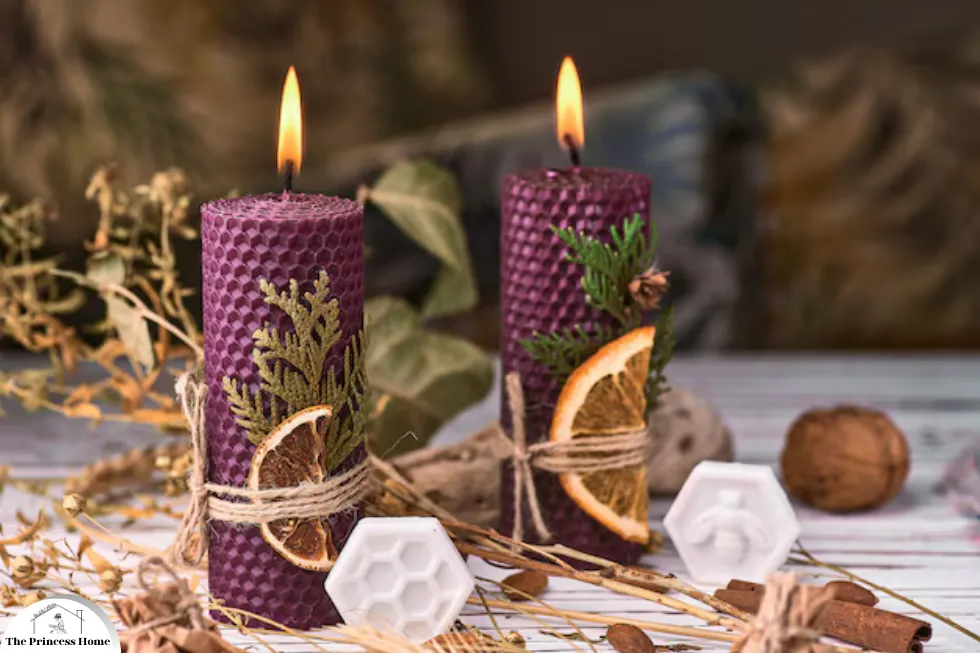
3.Candles and Candleholders:
To create a warm and inviting ambiance, include candles in your fall centerpiece. Choose unscented candles in fall-inspired colors like deep burgundy, goldenrod, or rich brown. Incorporate candleholders made from copper, brass, or glass to enhance the visual appeal. Candles are a fantastic way to add warmth and ambiance to your fall centerpiece.
Here’s a detailed look at how to choose and arrange candles and candleholders for a cozy and inviting fall display:
1. Candle Colors:
Deep Burgundy: This rich, warm color evokes the feeling of autumn leaves and is perfect for creating a sophisticated and elegant atmosphere. Burgundy candles can be paired with gold or bronze accents for a luxurious touch.
Goldenrod: A vibrant and cheerful color, goldenrod brings a bright and sunny element to your centerpiece, complementing the fall theme with a touch of warmth. It pairs beautifully with neutral tones and dark greens.
Rich Brown: Brown candles add a grounding, earthy element to your centerpiece, reflecting the colors of harvested crops and fallen leaves. They work well with rustic decor and can be combined with natural elements like pinecones and acorns.
2. Candle Types:
Pillar Candles: These sturdy candles can stand on their own or be placed in candleholders. They come in various heights, allowing you to create a layered effect by grouping different sizes together.
Taper Candles: Elegant and slender, taper candles can be used in candelabras or tall candleholders to add height and a formal touch to your centerpiece. They’re great for dinner parties and formal gatherings.
Tealight Candles: Small and versatile, tealight candles can be placed in clusters or within decorative holders. They are ideal for creating a subtle, ambient glow and can be used in mason jars or lanterns.
Floating Candles: These candles are placed in water-filled containers, creating a serene and reflective look. You can add fall-themed elements like floating leaves or citrus slices to enhance the display.
3. Candleholders:
Copper Candleholders: With their warm, reddish-brown hue, copper candleholders bring a rustic yet elegant feel to your centerpiece. They can add a touch of vintage charm and pair well with deep red and gold candles.
Brass Candleholders: Brass has a classic, timeless appeal that complements fall decor beautifully. Its golden tones enhance the richness of fall colors and add a touch of sophistication.
Glass Candleholders: Clear or frosted glass candleholders provide a versatile and modern look. They can showcase the candle’s glow while blending seamlessly with various decor styles. For a fall touch, choose glass holders with etched patterns or metallic accents.
4. Arranging Candles:
Layering: Create depth by varying the heights and types of candles. Combine tall pillar candles with shorter tealights or votives for a visually dynamic arrangement.
Grouping: Cluster candles in groups of three or five for a balanced look. You can use different types of candleholders to add variety and interest.
Accents: Enhance your candles with fall-themed accents like dried leaves, cinnamon sticks, or small pumpkins. Scatter these around the base of the candles to tie the whole arrangement together.
Surroundings: Place candles on a decorative tray or within a bed of fall foliage to anchor them and add a cohesive look to your centerpiece.
5. Safety Tips:
Stability: Ensure that your candles are securely placed in their holders to prevent tipping. For pillar candles, use a tray or plate to catch any wax drips.
Ventilation: If using scented candles, ensure the area is well-ventilated to avoid overwhelming the space with fragrance. Since you prefer unscented candles, this is less of a concern.
Supervision: Never leave burning candles unattended and keep them away from flammable materials, especially if incorporating them into a centerpiece with other decorations.
By carefully selecting and arranging candles and candleholders, you can create a fall centerpiece that not only looks beautiful but also adds a warm, inviting glow to your space.

4.Decorative Accents:
Personalize your fall centerpiece by adding decorative accents that reflect your style. Items like miniature pumpkins, pinecones, acorns, or even small scarecrows can be delightful additions. Adding decorative accents to your fall centerpiece is a great way to infuse your personal style and enhance the seasonal charm.
Here’s how to use various accents to create a unique and captivating fall arrangement:
1. Miniature Pumpkins:
Versatility: Miniature pumpkins come in a variety of colors, shapes, and textures, making them a versatile choice for fall decor. They can be placed among flowers, stacked, or used as vase fillers.
Customization: Paint them in coordinating colors or add glitter for a touch of sparkle. They also work well as place card holders or small gift toppers.
Grouping: Cluster several mini pumpkins together in a small basket or on a decorative plate for a charming and cohesive look.
2. Pinecones:
Natural Appeal: Pinecones add an earthy, rustic touch to your centerpiece. Their natural texture and warm tones complement fall’s color palette.
Decorative Use: Use them as table scatter, or place them in a glass vase or bowl. For a festive touch, spray-paint them in metallic colors like gold or copper.
Craft Ideas: Create a pinecone garland or wreath to complement your centerpiece, or use them to add texture and dimension around candles or flowers.
3. Acorns:
Subtle Charm: Acorns bring a whimsical and natural element to your arrangement. Their small size makes them perfect for scattering or placing in small containers.
Crafting: Consider painting acorns or adding a bit of glitter to them for a touch of elegance. They can also be used in DIY projects like wreaths or as part of a decorative arrangement in glass jars.
4. Small Scarecrows:
Playful Touch: Small scarecrows add a whimsical and playful element to your centerpiece. They’re perfect for creating a friendly and welcoming atmosphere.
Positioning: Place them among the flowers or on a decorative base to stand out. They work well in fall-themed centerpieces and can also be used as part of a larger display, like a fall-themed vignette.
5. Additional Decorative Accents:
Dried Leaves and Foliage: Incorporate dried leaves, branches, or even faux foliage to add texture and color to your centerpiece. Arrange them around candles, flowers, or in the base of a vase.
Cinnamon Sticks: Bundled cinnamon sticks tied with twine add a cozy, aromatic element to your centerpiece. They can be placed among other fall items or used as part of a larger arrangement.
Corn Husk: Drape or bundle corn husks as a natural and rustic accent. They can be used as a base for arranging other fall elements or incorporated into a wreath or garland.
6. Arranging Decorative Accents:
Layering: Place larger items like pumpkins and scarecrows in the back or center of your arrangement, with smaller accents like acorns and pinecones scattered around them.
Balance: Ensure that your accents are evenly distributed to create a balanced and visually appealing centerpiece. Avoid overcrowding to maintain a clean and elegant look.
Thematic Cohesion: Choose accents that complement your overall theme and color scheme. Combining different textures and colors can add depth and interest to your centerpiece.
7. Seasonal Adaptations:
Mix and Match: Feel free to mix various fall-themed accents to suit your style. Combining pumpkins, pinecones, and acorns can create a rich, layered look.
Interactivity: Consider incorporating elements that guests can interact with, such as small treats or handwritten notes that share fall-themed quotes or messages.
By thoughtfully incorporating these decorative accents, you can create a fall centerpiece that reflects your personal style and enhances the seasonal ambiance of your space.
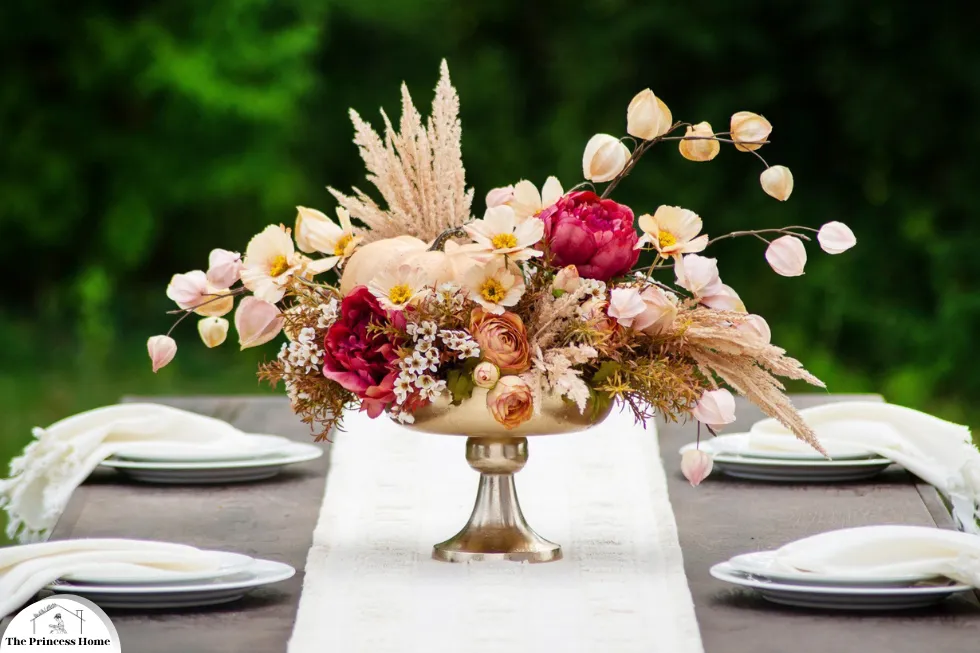
2*Arranging Your Fall Centerpiece
1.Start with a Focal Point:
Begin by selecting a central element for your centerpiece. This could be a large, eye-catching flower or a striking candle arrangement. Place it in the center of your chosen container.
Arranging Your Fall Centerpiece
1. Start with a Focal Point
Choosing the Focal Point:
Large Flower Arrangement: Opt for a statement flower arrangement if you want to highlight the beauty of fall blooms. Consider using sunflowers, chrysanthemums, or dahlias for a vibrant and impactful focal point.
Striking Candle Arrangement: If candles are your focal point, select a prominent candle or a cluster of candles in varying heights. Choose colors and styles that complement your fall theme.
Placement:
Center of the Container: Position your focal point in the center of the container or base. This will draw attention and create a balanced, cohesive look.
Height and Proportion: Ensure the focal point is proportionate to the container. A large flower arrangement might need a wider or taller base, while a cluster of candles can be grouped in a more compact arrangement.
2. Add Supporting Elements
Layering:
Height Variation: Surround the focal point with elements of varying heights to add depth and interest. For flowers, use shorter blooms or foliage at the base, and taller stems or branches around the focal flower.
Texture and Contrast: Introduce items with different textures, such as pinecones, acorns, or fabric leaves, to complement the focal point and create visual contrast.
Balance:
Symmetry vs. Asymmetry: Depending on your style, you can arrange supporting elements symmetrically for a formal look or asymmetrically for a more casual, natural appearance.
Even Distribution: Distribute supporting elements evenly around the focal point to maintain balance and ensure that all parts of the centerpiece are visually engaging.
3. Incorporate Seasonal Accents
Falling Leaves and Foliage:
Arrangement: Add dried leaves, faux foliage, or small branches around the base or as a backdrop to enhance the fall theme. Arrange them in a way that complements but does not overshadow the focal point.
Color Coordination: Choose leaves and foliage that harmonize with the colors of your focal point, creating a cohesive and well-blended centerpiece.
Miniature Pumpkins and Gourds:
Placement: Scatter mini pumpkins and gourds around the base of the focal point or group them in clusters. Their varying shapes and colors add seasonal charm and texture to the arrangement.
Accents: Consider using mini pumpkins as additional vases or holders for small candles or flower stems for a creative touch.
4. Final Touches
Adding Personal Elements:
Custom Accents: Personalize your centerpiece with custom accents, such as small figurines, seasonal messages, or family keepsakes. These elements can add a unique and personal touch.
Candles and Lighting: If using candles, ensure they are properly placed and secure. Add extra elements like fairy lights or small LED lights if desired for an added glow.
Finishing Details:
Adjust and Refine: Step back and evaluate the arrangement from different angles. Make adjustments to ensure balance and harmony. Trim any excess foliage or reposition elements as needed.
Clean Lines: Ensure that the centerpiece looks polished and tidy. Remove any stray leaves or debris to maintain a clean, elegant appearance.
By following these steps, you’ll create a fall centerpiece that is both visually appealing and perfectly reflects the seasonal ambiance.
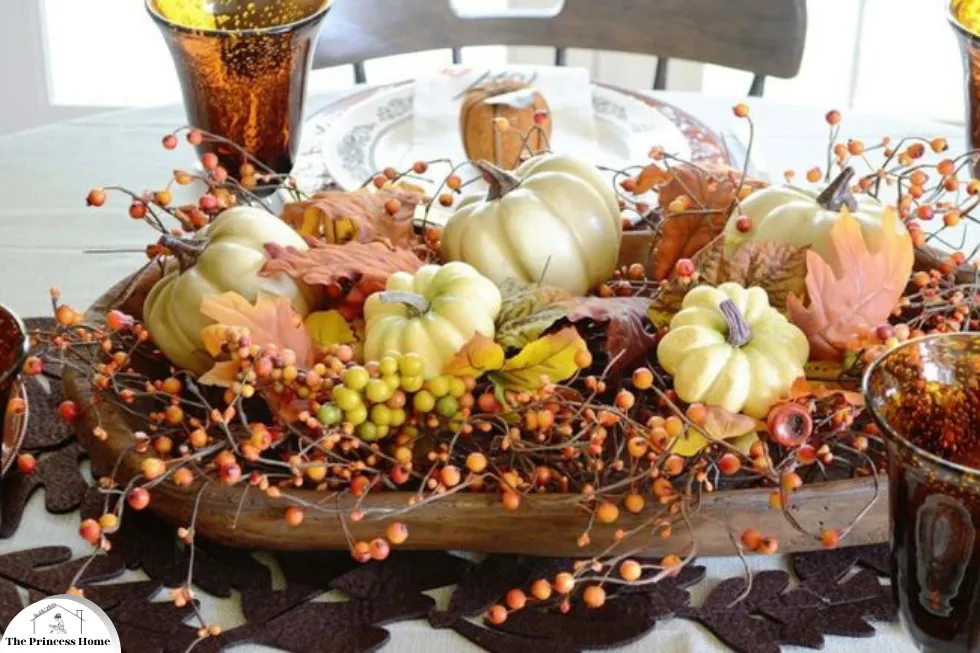
2.Layering and Balance:
Build your centerpiece by layering different elements around the focal point. Start with the tallest elements, such as tall flowers or branches, and gradually work your way down to shorter items like smaller flowers and foliage. Ensure a sense of balance by distributing the elements evenly and symmetrically, or opt for an asymmetrical design for a more natural and organic look.
Layering and Balance in Your Fall Centerpiece
1. Layering Elements
Start with the Tallest Elements:
Tall Flowers or Branches: Place the tallest elements first, such as tall flowers, branches, or greenery. These items form the backbone of your arrangement and set the height and structure for the centerpiece.
Positioning: Insert these elements into the center or slightly towards the back of the arrangement to ensure they don’t overwhelm the focal point but provide height and visual interest.
Build Downward:
Mid-Height Elements: Add medium-height items, such as medium-sized flowers or clusters of foliage. These elements should fill in the spaces around the taller items and start to define the overall shape of your centerpiece.
Shorter Items: Finally, place shorter items like small flowers, berries, or decorative accents. These will fill in the lower areas and create a complete, cohesive look.
Layering Technique:
Overlap and Blend: Overlap and blend the elements as you layer them to create a seamless transition between different heights and textures.
Depth and Texture: Incorporate various textures and colors to add depth and dimension. For example, mix soft foliage with more rigid branches or add a variety of flower types.
2. Achieving Balance
Symmetrical Design:
Even Distribution: For a formal or traditional look, distribute elements evenly on both sides of the focal point. This creates a balanced, symmetrical appearance that is visually pleasing and organized.
Mirror Effect: Mirror the arrangement on either side of the focal point to maintain symmetry. Ensure that each side has a similar height and volume of elements.
Asymmetrical Design:
Natural Look: For a more natural, organic feel, use an asymmetrical approach. Distribute elements unevenly, allowing for a more relaxed and spontaneous arrangement.
Visual Weight: Balance the visual weight by ensuring that the larger, more eye-catching elements are not all placed on one side. Distribute them strategically throughout the arrangement.
Check Balance and Proportion:
Step Back: Regularly step back and view the centerpiece from different angles to ensure it looks balanced and cohesive. Adjust elements as needed to correct any imbalances or gaps.
Adjust Heights and Positions: Fine-tune the heights and positions of the elements to achieve a balanced look. Taller items should not overpower the shorter ones, and vice versa.
Use of Color and Texture:
Complementary Colors: Use complementary colors and textures to enhance the overall harmony of the centerpiece. Ensure that the colors of the layering elements blend well with the focal point.
Textural Contrast: Combine different textures, such as smooth petals with rough pinecones or soft foliage with glossy berries, to create a dynamic and engaging arrangement.
3. Final Touches
Refine and Adjust:
Fine-Tuning: Make any final adjustments to ensure the arrangement is visually appealing. Trim excess stems or reposition items to achieve the desired balance.
Clean Up: Remove any stray leaves or debris to keep the centerpiece looking polished and well-organized.
By carefully layering elements and ensuring balance, you can create a fall centerpiece that is both visually stunning and perfectly suited to your style.
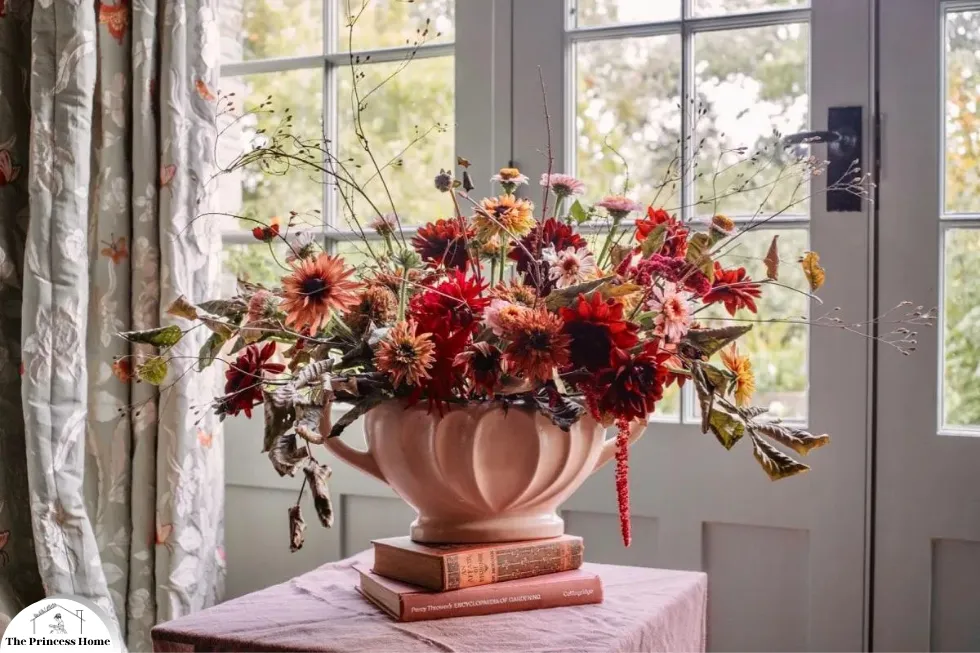
3.Mix Colors and Textures:
Create visual interest by mixing and matching colors and textures. Combine the warmth of orange and red flowers with the coolness of green foliage. Experiment with contrasting elements to add depth to your centerpiece.
Mixing Colors and Textures for a Dynamic Fall Centerpiece
1. Color Combinations
Warm Tones:
Orange and Red: Embrace the rich, vibrant hues of fall with colors like deep orange and crimson red. These warm tones can evoke the essence of autumn leaves and sunsets.
Complementary Colors: Pair these warm tones with complementary colors like golden yellows or deep burgundies to create a cohesive and visually appealing palette.
Cool Tones:
Green Foliage: Integrate various shades of green, from olive to emerald, to provide a refreshing contrast to the warm colors. Green foliage can balance out the intensity of the warmer tones and add a natural element to your arrangement.
Accents: Consider incorporating cool-toned accents like blue or teal to provide a subtle contrast and enhance the overall color depth.
Neutral Colors:
Cream and Beige: Use neutral colors like cream or beige to soften the overall look and create a harmonious backdrop for the vibrant fall colors.
Brown and Gray: These earthy neutrals can complement the warm tones and add a rustic or sophisticated touch to the centerpiece.
2. Texture Variations
Soft Textures:
Velvety Petals: Flowers with velvety petals, such as roses or dahlias, can add a luxurious feel to the arrangement. Their soft texture contrasts beautifully with more rigid elements.
Faux Fur or Fabric: Consider adding faux fur or fabric accents, like a textured table runner or napkins, to enhance the tactile experience of your centerpiece.
Rough Textures:
Pinecones and Twigs: Incorporate natural elements like pinecones or twigs to introduce a rugged texture. These items can add visual interest and a touch of rustic charm.
Wooden Elements: Wooden crates, branches, or slices can provide a sturdy, natural texture that complements the softer floral elements.
Mixed Textures:
Combining Elements: Mix soft flowers with rough textures like burlap or twine for a balanced, dynamic look. The contrast between smooth petals and rougher materials adds depth and intrigue.
Layering: Layer different textures within the arrangement. For example, pair soft flowers with textured foliage and accent them with shiny elements like metallic candles or glass vases.
3. Creating Depth and Interest
Layering Colors and Textures:
Background vs. Foreground: Use darker or more textured elements in the background and lighter, softer items in the foreground to create a sense of depth. This layering effect can make your centerpiece look fuller and more three-dimensional.
Contrast: Place contrasting elements next to each other to highlight their unique features. For example, a bright orange flower next to dark green foliage can make both elements stand out.
Experimenting with Proportions:
Mix Sizes: Combine large and small elements to create a visually balanced centerpiece. Larger items can serve as focal points, while smaller accents fill in the gaps and add detail.
Vary Heights: Use a mix of heights in your arrangement to create visual interest. Taller items can draw the eye upwards, while shorter items add density and substance.
Finishing Touches:
Accents and Details: Add small decorative accents like berries, acorns, or ribbon to enhance the texture and color variety. These details can tie the entire arrangement together and add a touch of finesse.
Maintenance: Regularly check and adjust the arrangement to ensure the colors and textures remain fresh and balanced. Replace any wilted flowers or items to keep the centerpiece looking its best.
By thoughtfully mixing and matching colors and textures, you can create a fall centerpiece that is visually rich and engaging, capturing the essence of the season while reflecting your personal style.
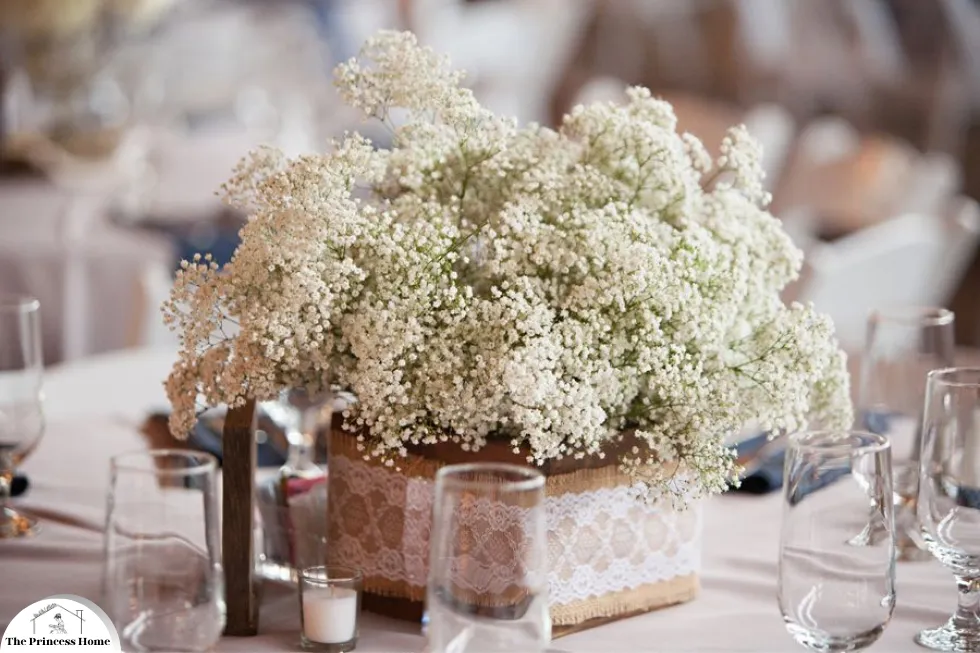
4.Fill Gaps with Filler Flowers and Foliage:
To achieve a lush and full appearance, use filler flowers like baby’s breath or statice to fill any gaps between the primary elements. Tuck in additional foliage as needed to create a cohesive and well-rounded arrangement.
Filling Gaps with Filler Flowers and Foliage
1. Choosing Filler Flowers
Baby’s Breath (Gypsophila):
Characteristics: Baby’s breath features delicate, tiny white or pastel flowers that add a soft, airy quality to your arrangement. Its light and feathery appearance works well to fill gaps without overwhelming the centerpiece.
Usage: Use baby’s breath to create a cloud-like effect around the focal flowers. It can also be used to soften the transition between different elements in the arrangement.
Statice:
Characteristics: Statice comes in a variety of colors, including purple, pink, and yellow. Its small, clustered flowers and sturdy stems make it a versatile filler that adds both color and texture.
Usage: Incorporate statice in clusters to add depth and visual interest. It can help bridge the gap between bold focal flowers and greenery.
Other Options:
Wax Flowers: Wax flowers are another excellent filler, offering small, colorful blooms that add texture and color. They are particularly useful for adding a touch of whimsy to the arrangement.
Limonium: Limonium, often used in dried arrangements, provides a similar texture to statice and can add a rustic or bohemian touch.
2. Using Foliage as Filler
Types of Foliage:
Eucalyptus: Eucalyptus leaves add a subtle, fragrant touch and can fill gaps while providing a sleek, modern look. Their varying shapes and colors, from silver to deep green, can complement a range of floral arrangements.
Fern: Ferns offer a lush, feathery texture that contrasts well with the structure of flowers. They can add volume and depth, making your arrangement look fuller.
Ruscus: Ruscus has a sturdy, evergreen appearance that works well as a base for filler. Its waxy leaves provide a nice contrast to softer elements.
Placement:
Around Focal Points: Place foliage around the base of focal flowers to create a seamless transition and fill any visible gaps.
In the Background: Use foliage in the background to build a fuller appearance and add depth to the arrangement.
3. Arrangement Techniques
Layering:
Build Up: Start by placing larger filler elements like foliage in the background and gradually layer in smaller filler flowers like baby’s breath. This technique helps create a cohesive and lush look.
Density: Ensure that the filler flowers and foliage are evenly distributed throughout the arrangement. This will help to balance the centerpiece and give it a fuller appearance.
Spacing:
Gap Filling: Use filler flowers to fill any gaps between the primary elements. Make sure the filler is evenly spaced to avoid clumping in one area.
Texture Contrast: Alternate between different types of filler to create a varied texture and visual interest. For example, mix delicate baby’s breath with sturdy eucalyptus.
Adjusting and Finalizing:
Step Back: Periodically step back and view the arrangement from different angles to ensure it looks balanced and full. Adjust the filler as needed to smooth out any gaps.
Trimming: Trim any excess stems or leaves that might protrude or disrupt the overall shape of the centerpiece. Ensure that the filler elements are neatly integrated into the arrangement.
By using filler flowers and foliage effectively, you can enhance the fullness and visual appeal of your fall centerpiece, creating a lush and inviting arrangement that beautifully complements the primary elements.
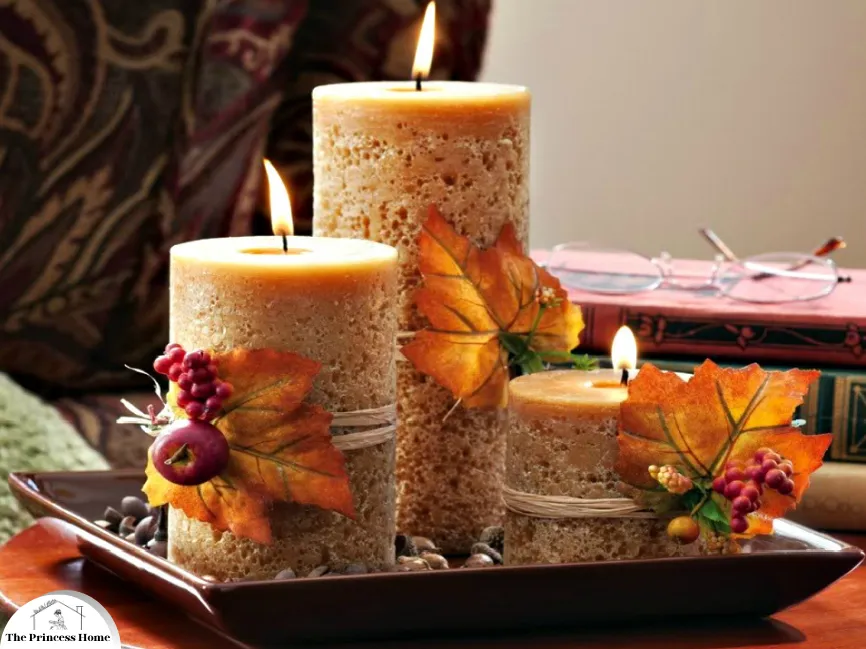
5.Incorporate Candles:
If you’re including candles in your centerpiece, carefully place them amidst the floral and foliage arrangement. Ensure they are secure and won’t obstruct the view of your centerpiece’s main elements.
Creating a stunning fall centerpiece is a delightful way to celebrate the beauty and warmth of autumn within your home. By carefully selecting the right elements and arranging them with creativity and care, you can craft a centerpiece that not only enhances your decor but also becomes a conversation piece for your gatherings.
Incorporating Candles into Your Fall Centerpiece
1. Choosing the Right Candles
Types of Candles:
Pillar Candles: These are ideal for a prominent focal point in your centerpiece. They come in various heights and can create a dramatic effect.
Tea Lights: Small and unobtrusive, tea lights are great for adding subtle illumination without overwhelming the arrangement.
Votive Candles: Slightly larger than tea lights, votives offer more light and can be placed in small holders or glass containers.
Colors and Scents:
Fall Colors: Opt for candles in rich autumnal colors such as deep burgundy, goldenrod, or burnt orange to complement the fall theme.
Unscented: Choose unscented candles if you prefer to keep the focus on the visual aspects of the centerpiece, especially if you’re using scented candles in other parts of the room.
2. Placement and Integration
Positioning Candles:
Amidst the Arrangement: Place candles among the flowers and foliage to create a cohesive look. Ensure they are positioned where they complement but do not overshadow the main elements of your centerpiece.
Height Considerations: Position taller candles towards the center or back of the arrangement and shorter candles towards the front. This helps to maintain visibility and balance.
Securing Candles:
Stability: Ensure that candles are securely placed and won’t easily tip over. Use candle holders, trays, or adhesive putty to stabilize them if needed.
Safety: Keep candles away from highly flammable materials and ensure they are well-ventilated. Never leave burning candles unattended.
3. Enhancing the Candle Effect
Using Holders and Accessories:
Candleholders: Select holders that complement the fall theme. Consider materials like copper, brass, or glass to enhance the visual appeal.
Decorative Accents: Incorporate decorative elements such as small leaves or berries around the base of the candles to tie them into the overall centerpiece design.
Creating Visual Interest:
Candle Heights: Use a mix of candle heights to add dimension and visual interest. For example, place taller candles in the center and smaller ones around them.
Layering: Arrange candles in a way that they are partially obscured by foliage or flowers, creating a layered effect. This adds depth and integrates the candles more seamlessly into the arrangement.
4. Final Touches
Adjusting for Balance:
Visual Harmony: Make sure that the candles do not obstruct the view of the centerpiece’s main elements. Adjust their placement as needed to maintain a balanced and attractive arrangement.
Lighting Effect: Test the arrangement with the candles lit to see how the light enhances the centerpiece. Adjust the candles or surrounding elements if necessary to achieve the desired effect.
Maintenance:
Clean Up: Regularly check the candles for any wax spills or residue and clean them up to maintain the pristine look of your centerpiece.
Replacement: Replace candles as needed if they burn down or if you wish to switch colors or scents for different occasions.
By carefully incorporating candles into your fall centerpiece, you can create a warm and inviting atmosphere that enhances the beauty of your arrangement and adds a touch of elegance to your autumn decor.
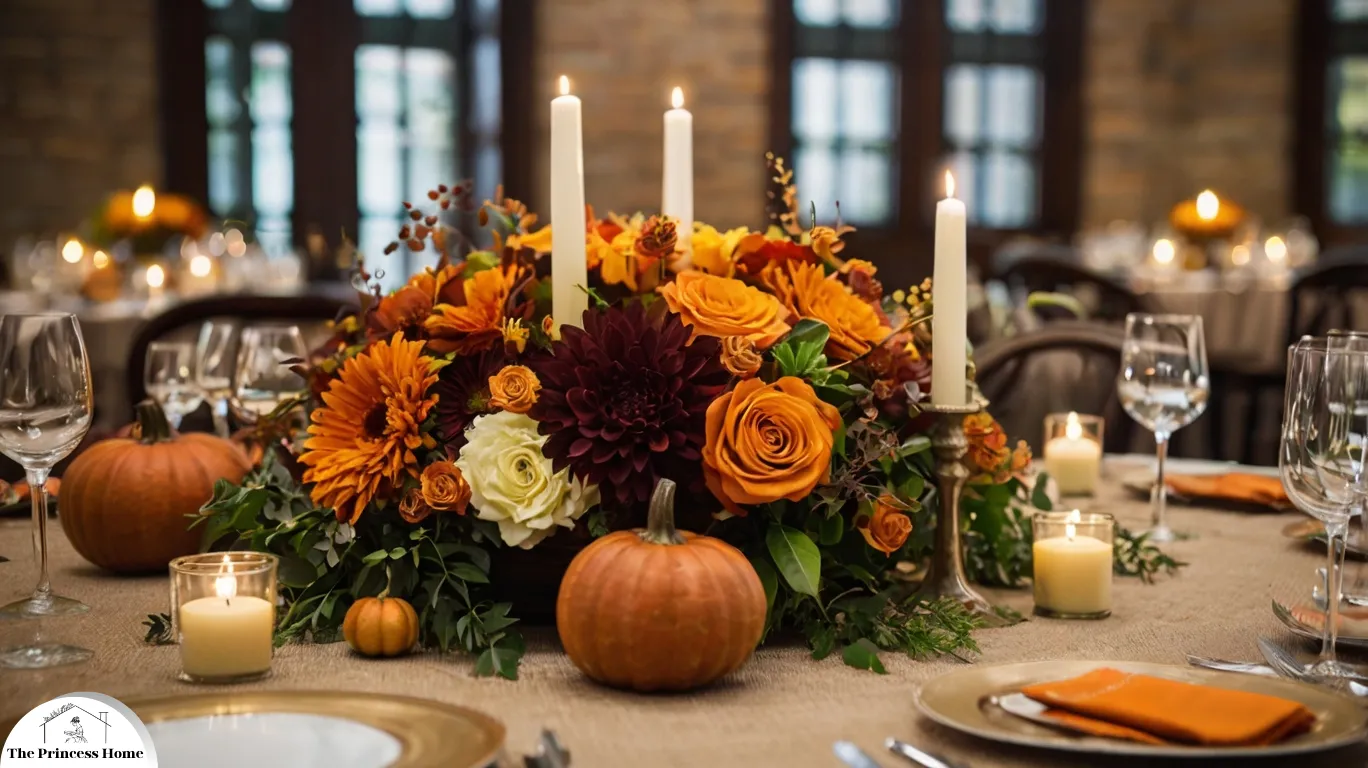
3*Fall Centerpiece Ideas
1.Harvest Bounty Centerpiece:
Embrace the harvest season by incorporating vegetables like mini pumpkins, gourds, and colorful corn cobs into your centerpiece. Arrange them in a wooden crate or a basket, and complement the arrangement with sunflowers, wheat stems, and autumn leaves for a rustic and abundant look.
2.Pinecone and Candle Centerpiece:
Collect pinecones from your yard or a local park and spray-paint them in metallic shades like gold, copper, or silver. Arrange the pinecones around a group of pillar candles on a tray or a wooden board for an elegant and earthy centerpiece.
3.Fall Fruit Centerpiece:
Combine the beauty of fall fruits like apples, pears, and grapes with seasonal flowers and foliage. Place the fruits in a decorative bowl or on a tiered stand, and intersperse them with flowers, greenery, and candles for a luscious and aromatic centerpiece.
4.Mason Jar Lanterns:
Transform mason jars into charming lanterns by placing tea lights or LED candles inside. Decorate the jars with twine, burlap, or lace, and arrange them in clusters or along a table runner for a cozy and intimate atmosphere.
Monochromatic Elegance:
Choose a single color palette, such as all-white or shades of deep burgundy and maroon, for a sophisticated and minimalist centerpiece. Use flowers, candles, and vases in your chosen color scheme to create a striking and refined look.
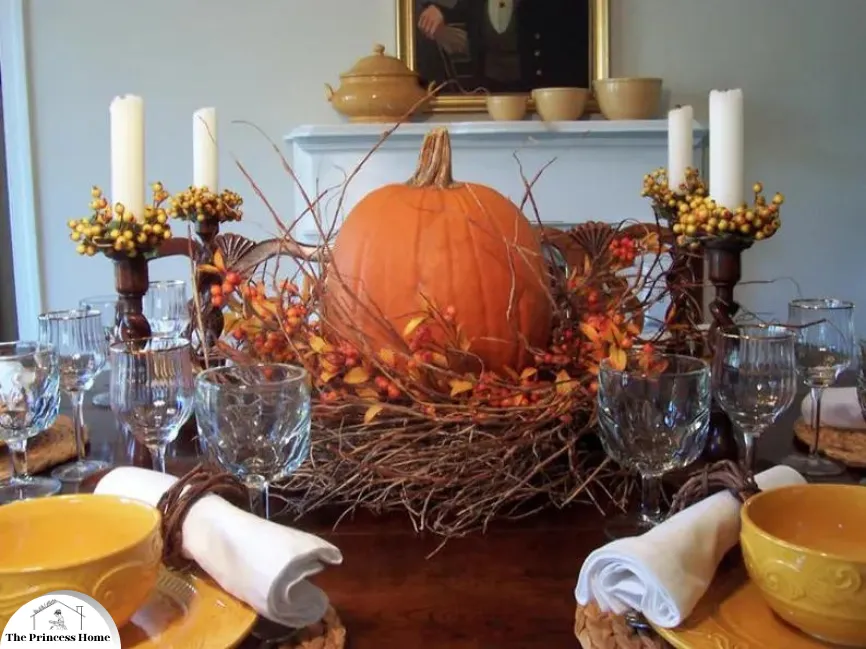
4*Additional Tips &Considerations
1.Freshness Matters:
To ensure your centerpiece remains vibrant and appealing, use fresh flowers and foliage. Change the water in your vases every few days and trim the stems to prolong their freshness.
2.Height Variation:
Play with height by incorporating tall elements like branches or candleholders, as well as lower elements like flowers and pumpkins. This adds visual interest and depth to your centerpiece.
3.Scented Elements:
Consider incorporating scented elements like cinnamon sticks, cloves, or fragrant herbs into your centerpiece to infuse your space with the cozy aromas of fall.
4.Table Settings &Linens:
Coordinate your table settings, linens, and dinnerware with your centerpiece to create a cohesive and inviting tablescape.
5.Seasonal Centerpiece Rotation:
Throughout the fall season, you can refresh your home decor by periodically updating your centerpiece to reflect the changing foliage and available flowers.
6.Outdoor Fall Centerpieces:
Extend your fall decor to your outdoor spaces by creating centerpieces for your porch, patio, or garden. Use weather-resistant elements like pumpkins, lanterns, and hardy mums.
7.DIY vs. Store-Bought:
While crafting your own fall centerpiece can be a rewarding experience, there are also beautiful pre-made options available at florists and home decor stores if you prefer a hassle-free solution.
Whether you prefer a traditional, rustic, or modern look, the key to a successful fall centerpiece lies in your attention to detail and your ability to infuse your unique style into the arrangement. So, this fall, let your creativity bloom and bring the spirit of autumn indoors with a captivating and elegant centerpiece that will leave a lasting impression on your guests and family alike.
In conclusion
fall centerpieces are a wonderful way to embrace the beauty and warmth of autumn and enhance your home decor. With creativity, attention to detail, and a touch of seasonal inspiration, you can craft a centerpiece that becomes a captivating focal point for your gatherings and a source of admiration for your family and friends. So, don’t hesitate to experiment, express your unique style, and let the colors and textures of fall inspire your creativity as you embark on your centerpiece-making journey.

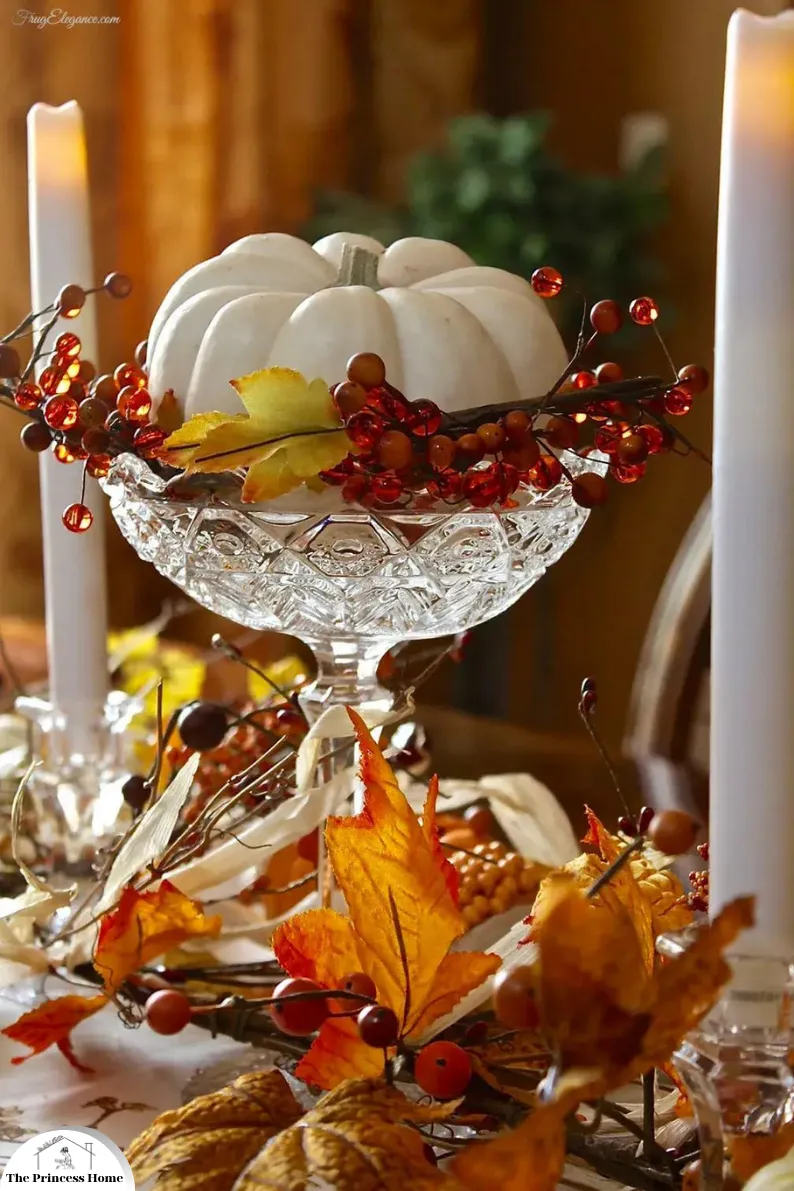
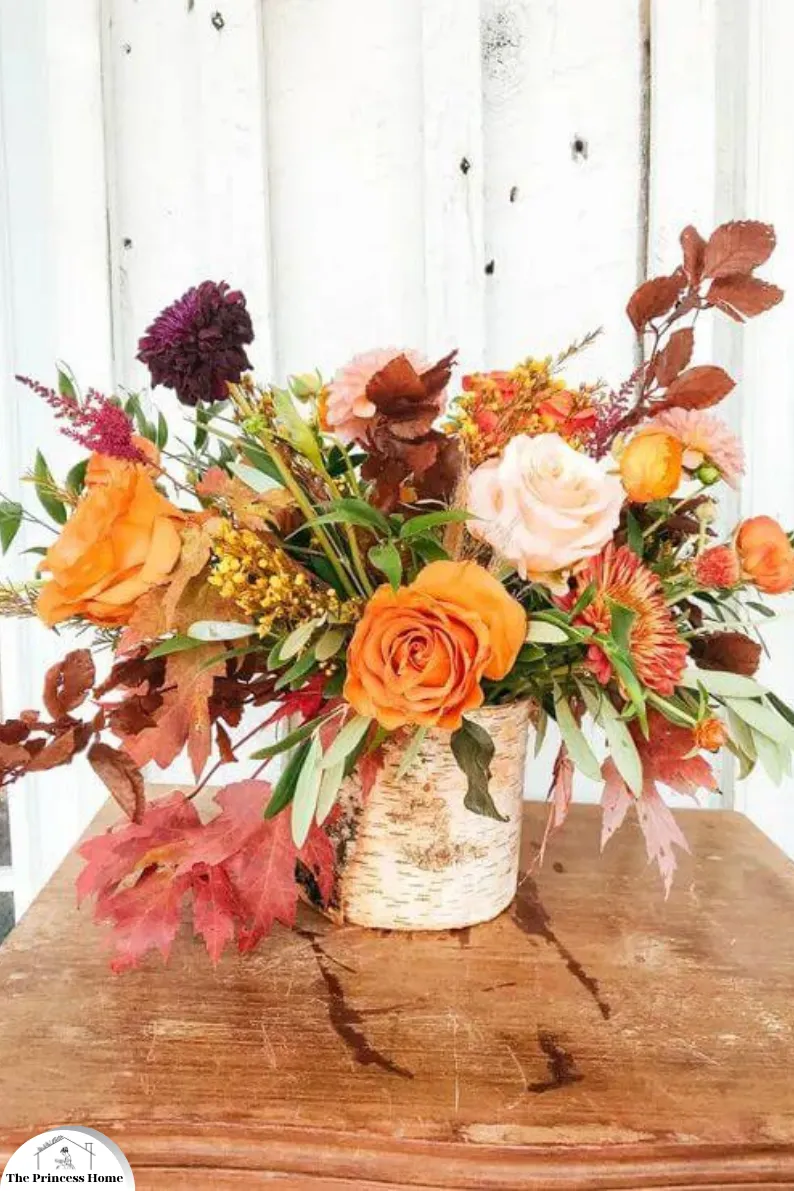
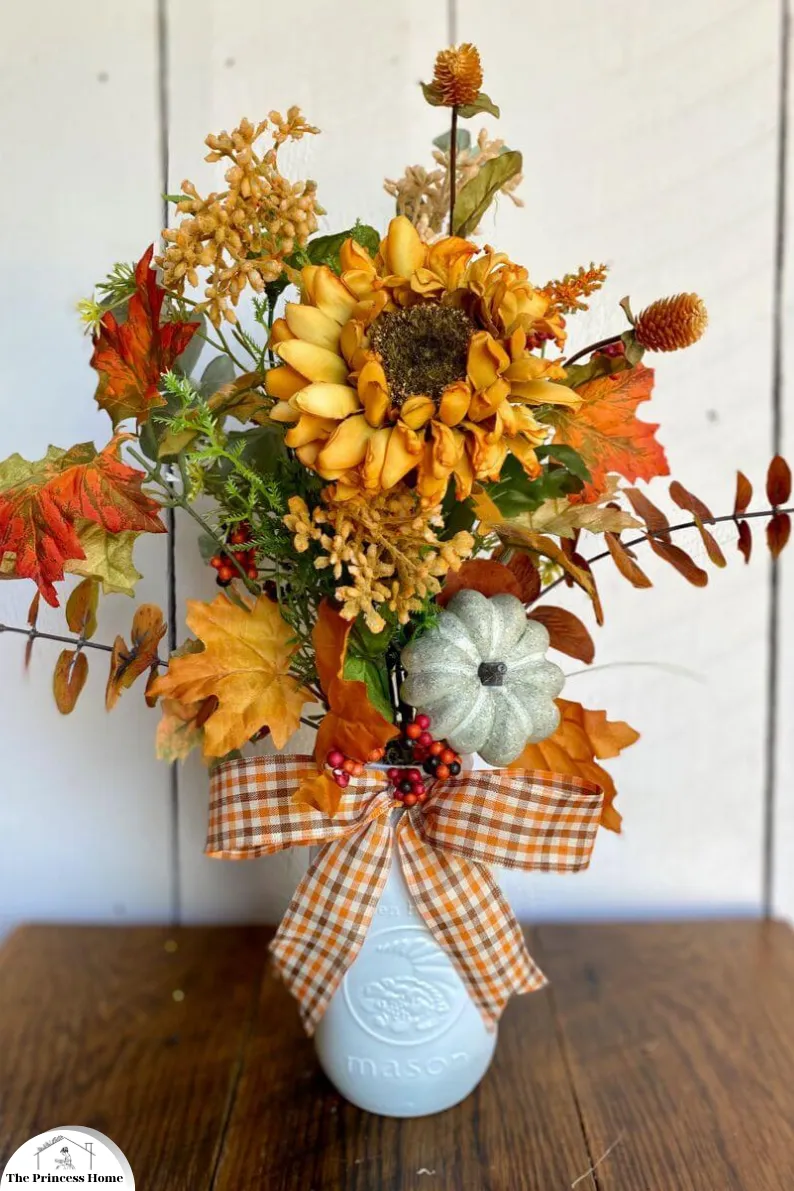
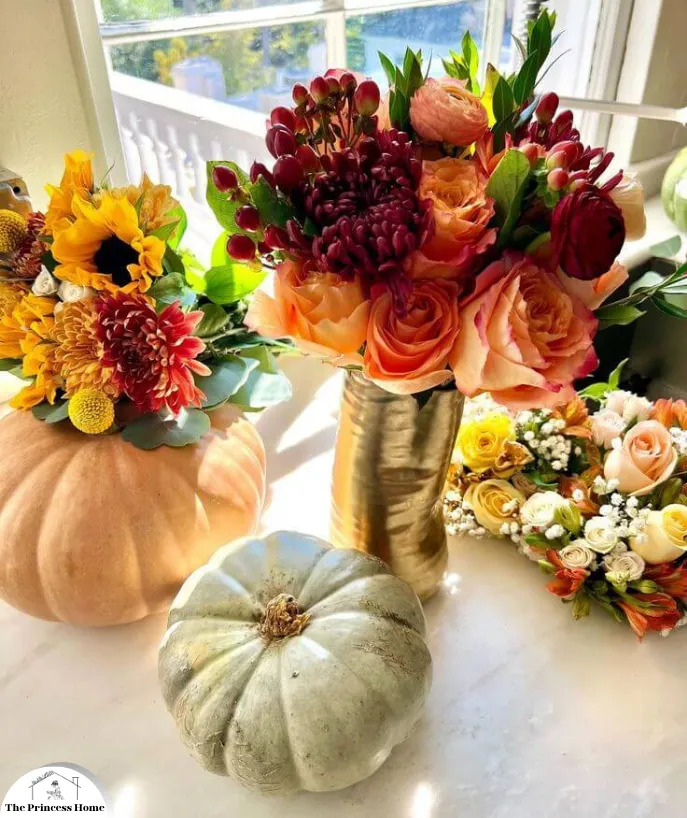
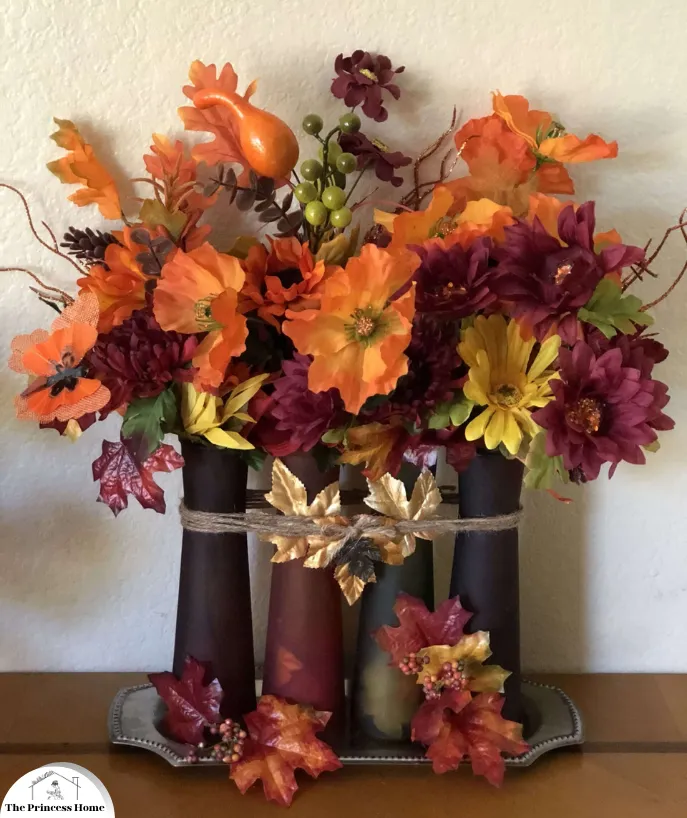
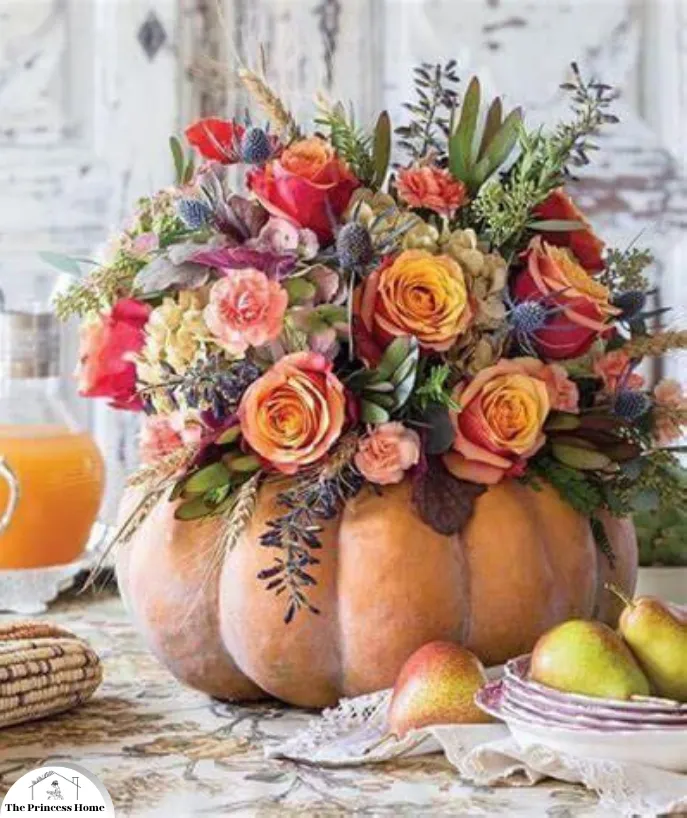
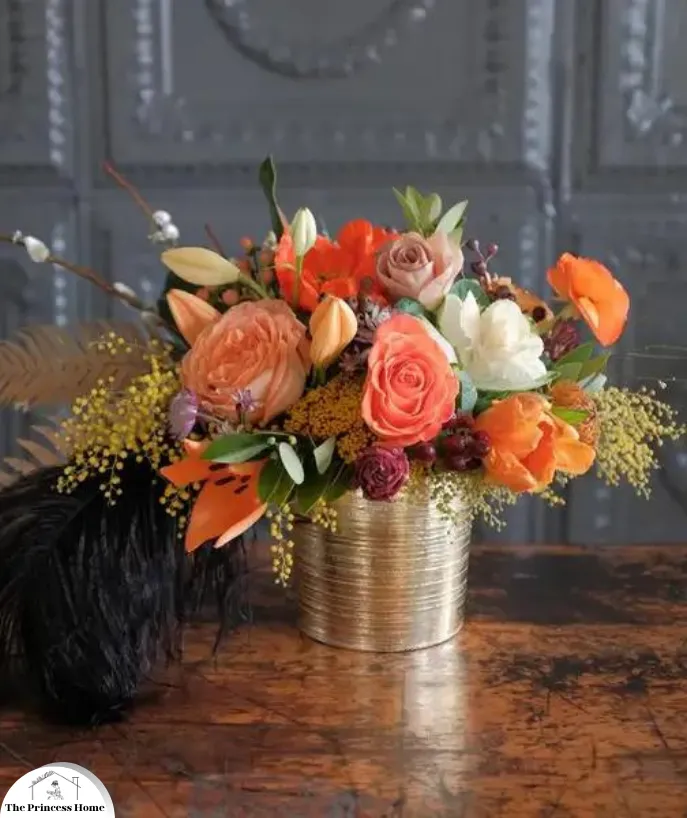
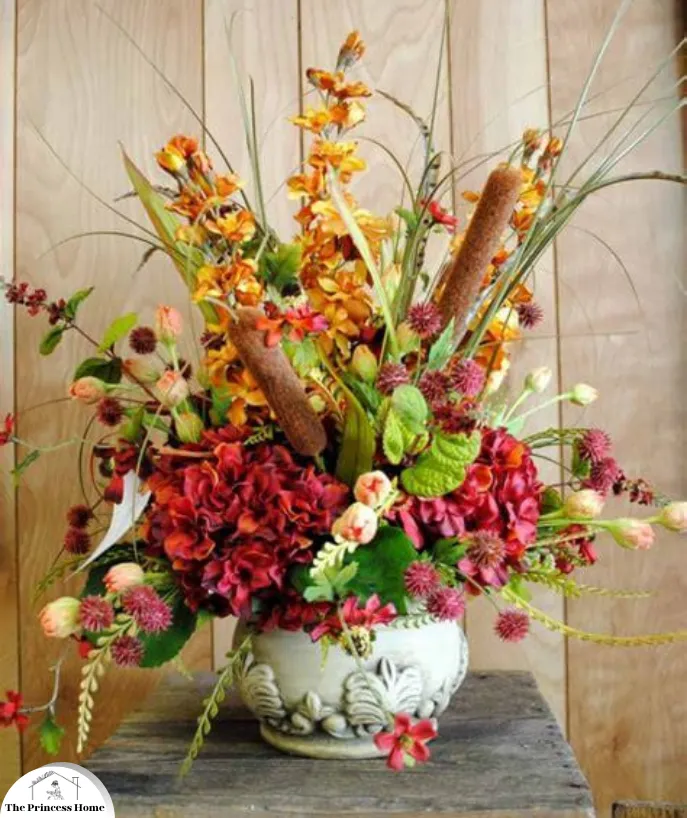
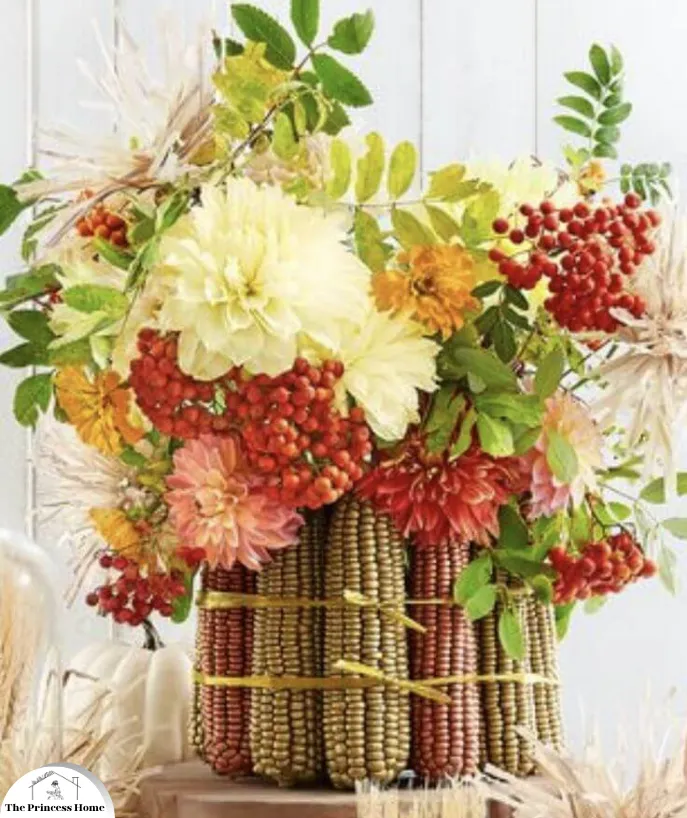

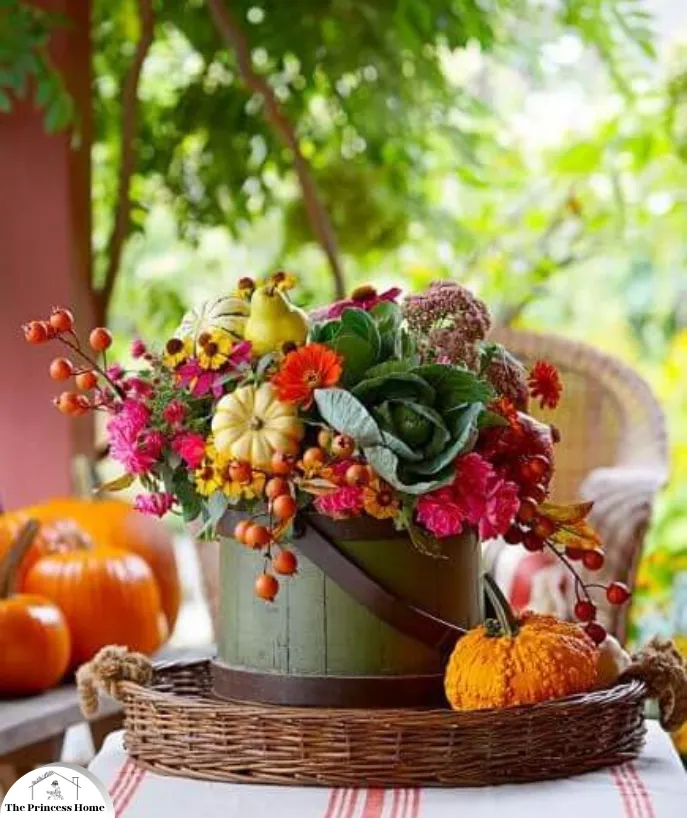
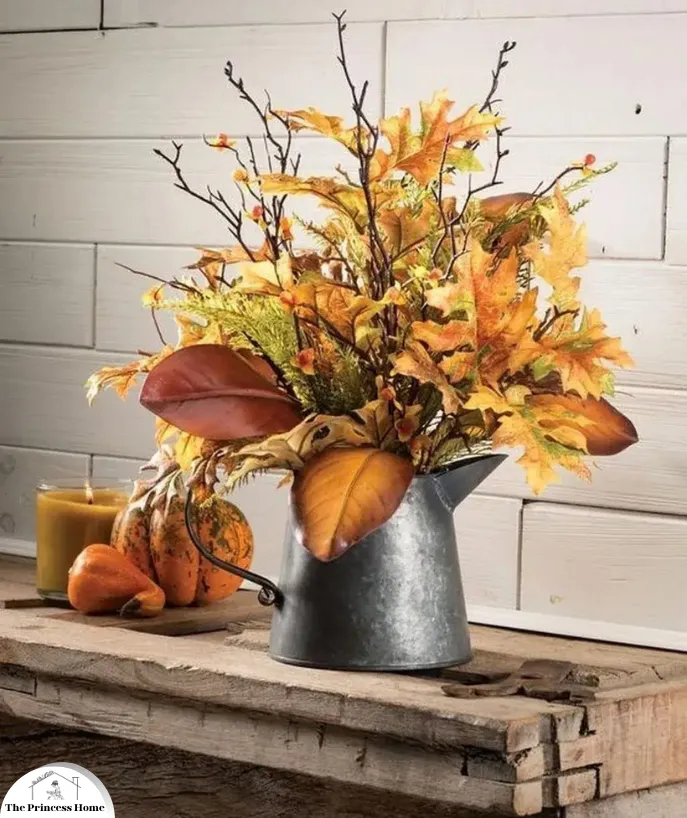
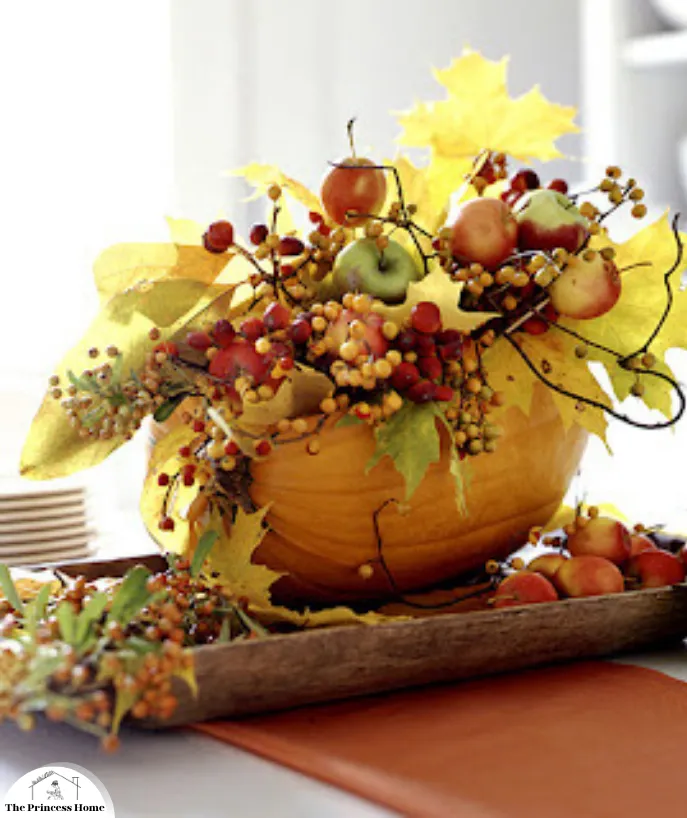
Here are some frequently asked questions related to fall centerpieces, along with their answers:
1. What are the best flowers to use in a fall centerpiece?
The best flowers for a fall centerpiece are those that reflect the warm and rich colors of autumn. Some excellent choices include chrysanthemums, sunflowers, dahlias, roses, and marigolds. You can also incorporate seasonal foliage like maple leaves, oak leaves, and eucalyptus branches for added texture and depth.
2. How can I make my fall centerpiece last longer?
To extend the life of your fall centerpiece, keep the water in the vase clean and change it every few days. Trim the stems of your flowers at an angle to help them absorb water more effectively. Additionally, keep your centerpiece away from direct sunlight and drafts, which can cause the flowers to wilt prematurely.
3. Can I create a fall centerpiece on a budget?
Absolutely! Creating a budget-friendly fall centerpiece is entirely possible. You can use inexpensive elements like pinecones, acorns, and leaves from your yard. Consider DIY options for vases or containers using items like mason jars or repurposed containers. Shopping for seasonal flowers and foliage at local markets or using what you have in your garden can also help you save on costs.
4. How do I incorporate candles into my fall centerpiece safely?
To incorporate candles into your fall centerpiece safely, make sure they are secured in candleholders that can catch any dripping wax. Keep the candles away from flammable materials and always monitor them while they are lit. If you’re concerned about open flames, consider using battery-operated LED candles, which are a safer alternative.
5. Can I use artificial flowers and foliage in my fall centerpiece?
Yes, you can use artificial flowers and foliage in your fall centerpiece if you prefer a longer-lasting option. High-quality artificial elements can look remarkably realistic and require no maintenance. They also allow you to enjoy your fall centerpiece throughout the season without worrying about wilting or changing water.
6. How can I adapt a fall centerpiece for different occasions or holidays?
You can easily adapt your fall centerpiece for different occasions or holidays by incorporating thematic elements. For example, for Halloween, you can add miniature pumpkins and spooky accents. For Thanksgiving, include elements like gourds, pinecones, and faux fall berries. Changing the colors and decorative accents can also help tailor your centerpiece to various events.
7. What’s the best way to store fall centerpieces after the season ends?
To store your fall centerpieces after the season ends, carefully disassemble them, removing any organic elements like flowers and foliage. Store reusable items like vases, candleholders, and artificial elements in a cool, dry place. If you used fresh flowers, you can dry and preserve them for future use in decorative arrangements.
